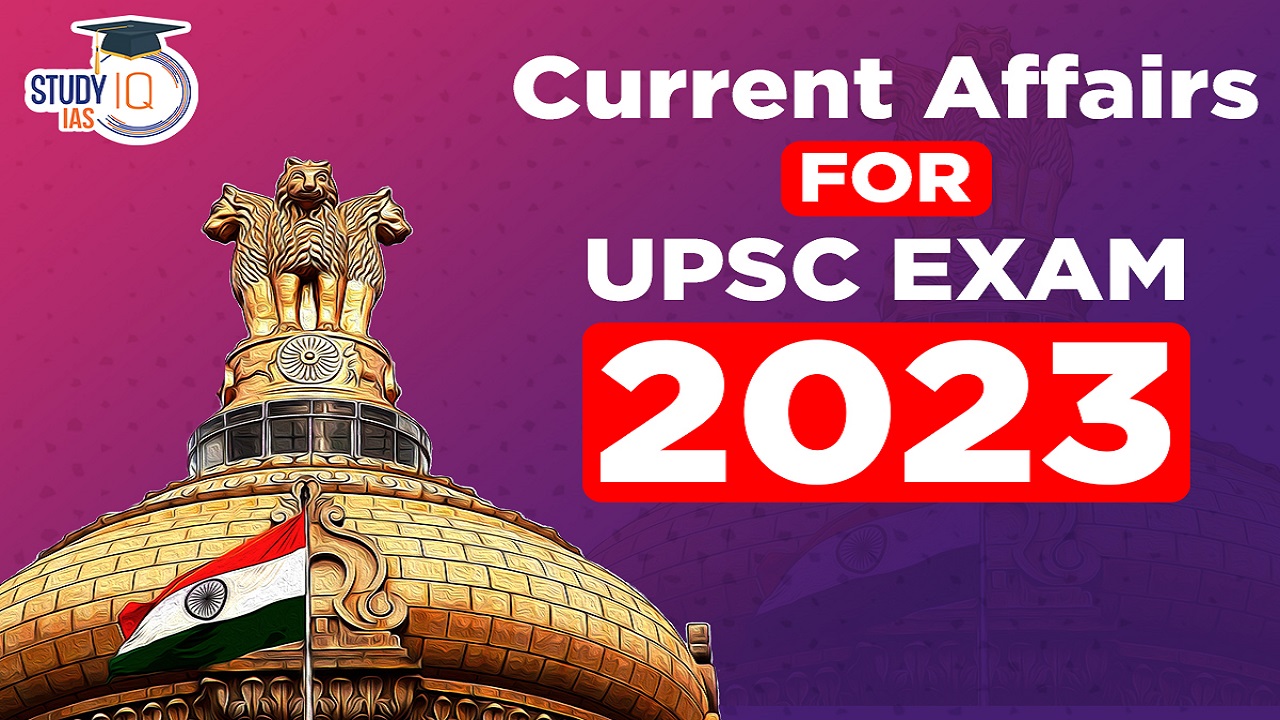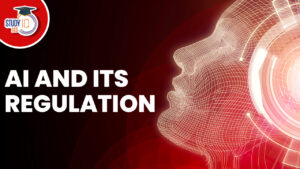Current Affairs 5th June 2023 for UPSC Prelims Exam
Adverse Possession
Context: Law Commission has suggested that there is no justification to make any changes to the laws related to Adverse Possession.
What is Adverse Possession?
- Idea: The concept of adverse possession has emerged from the idea that land must not be left vacant but instead, be put to judicious use.
- Meaning: The phrase adverse possession refers to the hostile possession of property, which must be “continuous, uninterrupted, and peaceful.”
- Rationale behind the concept: The title to land should not long be in doubt”, “society will benefit from individual making use of land left idle by the owner,” and “persons who come to regard the occupant as owner may be protected.”
- The idea can be simplified as “original title holder who neglected to enforce his rights over the land cannot be permitted to re-enter the land after a long passage of time”.
- Introduction of the law in India:
- The Act XIV of 1859, which regulated the limitation of civil suits in British India was the first attempt to introduce adverse possession law in India.
- Significant changes were later made after the passage of the Limitation Act in 1963.
How to determine adverse possession?
- Based on Supreme Court’s ruling in Karnataka Board of Wakf v Government of India, a person claiming adverse possession should show:
- On what date he came into possession
- What was the nature of his possession
- Whether the factum of possession was known to the other party
- How long his possession has continued
- His possession was open and undisturbed
- For adverse possession to be “open,” it is not necessary to be brought to the specific knowledge of the owner.
- However, such requirement insisted on where an ouster of title is pleaded.
- For a possession to be “undisturbed” requires a “consistent course of conduct, which can’t be shown by a “stray or sporadic act of possession”.
Limitation Act 1963
- The 1963 Act strengthened the position of the true owner of the land, as the burden of proof of adverse possession lay on the person claiming it.
- Any person in possession of private land for over 12 years or government land for over 30 years can becomes the owner of that property, provided under Articles 64, 65, 111, or 112 of the 1963. It Is applied to immovable property.
Issues with law on adverse possession:
- According to the Supreme Court, law of adverse possession “ousts an owner on the basis of inaction within limitation” and is “irrational, illogical, and wholly disproportionate”.
- It is extremely harsh for the true owner and a lottery for a dishonest person who has illegally taken possession of the property. It places a premium on dishonesty.
- It has been found that true owners of property have been subjected to avoidable and expensive litigation by fraud persons.
- The already overburdened court machinery is further saddled with avoidable work.
- The land prices are skyrocketing in both rural and urban areas and there is no reason to believe that land is not put to proper use.
Current Affairs 3rd June 2023 for UPSC Prelims Exam
Udanti Sitanadi Tiger Reserve
Context: Forest personnel clearing encroachments in Chhattisgarh’s Udanti Sitanadi Tiger Reserve have been attacked by the villagers.
About Udanti Sitanadi Tiger Reserve
- Udanti-Sitanadi Tiger Reserve: It is in the Gariaband district of Chhattisgarh. It was established in 2008-09 by merging two separate wildlife sanctuaries (Udanti and Sitanadi Wildlife Sanctuaries).
- Rivers: The Udanti and Sitanadi wildlife sanctuaries derive their name from the rivers Udanti and Sitanadi which flow through the respective sanctuaries.
- Flora:
- Dry Teak Forest
- Dry peninsular Sal Forest
- Moist peninsular Sal Forest
- Northern Dry mixed deciduous forest
- Dry Bamboo Forest
- Fauna: All the representative faunal species of Central India are found in Udanti-Sitanadi Tiger reserve.
- Asiatic Wild Buffalo is the key endangered species found here.
- Apart from the tiger other endangered and rare species are Indian Wolf, Leopard, Sloth Bear and Mouse Deer.
- Managerial Issues: Since, the Tiger Reserve and its adjoining area/corridor come under the ‘Red Corridor’ due to left wing extremism; it is a challenge to achieve tiger conservation objectives in the Tiger Reserve.
Initiative on Critical and Emerging Technology (iCET)
Context: Recently, U.S. Secretary of Defence said that U.S.-India Initiative on Critical and Emerging Technology (iCET) allows the exploration of new ways to co-develop key defence platforms.
About Initiative on Critical and Emerging Technology (iCET):
- iCET was announced during the Quad summit 2022.
- Leading iCET: The iCET will be led by the U.S. National Science Foundation and Department of Science and Technology of India.
- Objectives: To foster a partnership joining six of India’s Technology Innovation Hubs to support at least 25 joint research projects with the US in fields such as AI and data science and apply its gains to agriculture, health and climate, and other fields.
- To provide cutting-edge technologies to the rest of the world which are affordable.
- iCET adopts the idea of the free and open Indo-Pacific and commitment to fostering an open, accessible, and secure technology ecosystem, underlined with mutual trust.
- Six Areas of Cooperation: Scientific research and development; quantum and artificial intelligence, defense innovation, space, advanced telecom which would include things like 6G and semiconductors.
Significance of iCET
- The iCET’s promise of shared technological advancements has direct links to democratic values in the way they are designed, developed and used.
- It will bring greater coherence to this round of India-US technological engagement.
- iCET will forge closer linkages between the government, academia and industry of the two countries.
- It is a step towards adapting to new strategies in the Indo-Pacific region.
Self-Healing Polymers
Context: Recently, Stanford University engineers have developed a multilayer, self-healing electronic skin that automatically realigns during healing.
About Self-Healing Polymers
- Researchers used two dynamic polymers – PPG (polypropylene glycol) and PDMS (polydimethylsiloxane, better known as silicone).
- Both these polymers have rubber-like electrical and mechanical properties and biocompatibility and can be mixed with nano- or microparticles to enable electric conductivity.
- The chosen polymers and their respective composites are immiscible.
- They don’t mix with one another yet; due to the dynamic hydrogen bonding, they adhere to one another well to create a durable, multilayer material.
- When warmed, both polymers soften and flow but solidify as they cool.
- At room temperature, healing can take as long as a week, but when heated to just 70°C (158°F), the self-alignment and healing happen in about 24 hours.
- Significance: Like human skin, self-healing polymers allow soft electronic and robotic devices to recover autonomously from various forms of damage.

Electronic Interlocking (EI)
Context: Changes in the electronic interlocking system has been found as one of the main reason for the train accident in Odisha’s Balasore.
About Electronic Interlocking (EI)
- Electronic interlocking (EI) is a type of railway signalling system that uses electronic components to control signals and points.
- The interlocking logic in the EI System is based on software and hence any modification is easy without the need for any wiring changes.
- The EI System is a processor-based system which has extensive diagnostic tests built into it.
- The interlocking system ensures that the points (movable sections of the track that allow trains to change direction from one track to another) are properly aligned and locked in the correct position before a train passes over them.
- Track circuits are electrical circuits installed on the track that detect the presence of a train.
- They help determine whether a section of track is occupied or vacant, enabling the interlocking system to control train movements accordingly.
Advantage of Electronic Interlocking (EI)
- By employing electronic interlocking, the risk of potential accidents and collisions is significantly reduced, enhancing the overall safety and efficiency of railway operations.
- It improves the reliability of the system and leads to minimal system downtime even in cases of failures.
- EI systems are designed to prevent train collisions by ensuring that signals are only cleared to proceed when the route ahead is clear.
3D Printing
Context: Researchers have discovered a method for 3D printing nanoscale optical-grade glass at significantly lower temperatures compared to traditional approaches.
About the Discovery
- The researchers have utilized a hybrid organic-inorganic polymer resin, which allows for the creation of nanoscale optical-grade glass with properties such as optical transparency, exceptional thermal, chemical, and mechanical characteristics.
Significance of the Discovery
- The conventional methods of manufacturing glass rely on high temperatures and restrictive forming techniques, which limited its integration with other materials in microsystem technologies.
- However, with the low-temperature 3D printing technique developed by the researchers allows for the direct integration of glass structures onto substrates with exceptional precision.
- This opens up new possibilities for the seamless integration of glass components in cutting-edge technologies such as micro-optics, photonics, microelectromechanical systems (MEMS), and microfluidics.
What is 3D Printing?
- 3D printing, also known as additive manufacturing, is a process of creating three-dimensional objects by layering materials based on a digital design.
- It is a manufacturing technique that allows the creation of complex shapes and structures with high precision.
How 3D Printing is done?
- The basic principle of 3D printing involves building an object layer by layer.
- It starts with a digital model or a computer-aided design (CAD) file, which is sliced into thin cross-sectional layers.
- The 3D printer then reads these slices and deposits or solidifies material one layer at a time, gradually building up the final object.
Various 3D Printing Technologies
- Fused Deposition Modeling (FDM): This method melts and extrudes thermoplastic filaments through a nozzle, which moves in a controlled manner to deposit the material layer by layer.
- Stereolithography (SLA): SLA printers use a liquid photopolymer resin that is cured by a UV laser or light source. The resin solidifies layer by layer to form the object.
- Selective Laser Sintering (SLS): SLS printers use a powdered material, such as plastic or metal, and a high-power laser to selectively fuse the particles together to create the object.
- Digital Light Processing (DLP): Similar to SLA, DLP printers use a vat of liquid resin. Instead of a laser, they use a digital light projector to selectively cure the resin layer by layer.
- Binder Jetting: In this method, a liquid binder is selectively deposited onto layers of powder material, binding them together to create the object.
Advantages of 3D Printing
- 3D printing offers several advantages over traditional manufacturing methods.
- It allows for the production of highly customized and complex geometries that may be challenging or even impossible to achieve with conventional techniques.
- It also reduces material waste since only the required amount of material is used.
- Furthermore, 3D printing enables rapid prototyping, faster production times, and the ability to manufacture on-demand and in small quantities.
Applications of 3D Printing
- The applications of 3D printing span various industries, including aerospace, automotive, healthcare, architecture, consumer products, and more.
- It is used for prototyping, tooling, customized manufacturing, creating intricate models, and even producing end-use parts and components.


 Daily Quiz 18 April 2025
Daily Quiz 18 April 2025
 OSSC CGL Syllabus 2025 and Exam Pattern ...
OSSC CGL Syllabus 2025 and Exam Pattern ...
 AI and its Regulation in India, Limitati...
AI and its Regulation in India, Limitati...





















